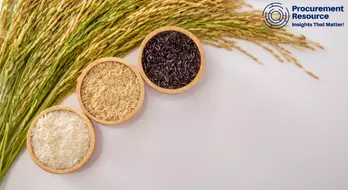India’s Wheat Procurement has been witnessing an uptick of about 44% since mid-March YOY

India’s wheat procurement from the new harvest has reached around 2.08 million metric tons since mid-March this year, according to government officials familiar with the data. This volume marks an increase of over 44% compared to the same period last year, suggesting that the country could be on track for a strong harvest season. The early procurement pace is expected to support restocking efforts and may reduce dependence on imports in the coming months.
The Food Corporation of India (FCI) has been leading the procurement drive, focusing initially on Madhya Pradesh, where early wheat varieties are harvested ahead of the northern states. Procurement volumes are likely to rise further as harvesting advances across key production regions like Punjab, Haryana, and Uttar Pradesh.
Officials linked to the process, speaking without formal authorization, indicated that the early signs point to healthy yields and satisfactory government buying. The outlook for the wheat crop appears favorable based on early field reports.
Market participants have also noted that higher price incentives are encouraging farmers to sell more to the government. In Madhya Pradesh, a state-level bonus of INR 175 per 100 kg is being added to the Centre’s minimum support price of INR 2,425 per 100 kg, making government sales more attractive for growers.
Last year, the central procurement target had been missed, with FCI collecting only 26.6 MMT against a planned 30–32 MMT. That shortfall contributed to a spike in wheat prices earlier this year. However, the current marketing year carries more optimism, with the agriculture ministry projecting a record wheat output of 115.4 MMT.
Read More About Wheat Production Cost Reports - Request Free Sample Copy in PDF
Industry observers, including representatives from major flour milling associations, have also echoed confidence in this year’s crop. Early harvest arrivals are being described as healthy, both in terms of yield and quality, supporting expectations of a stable market and better buffer stock levels.



